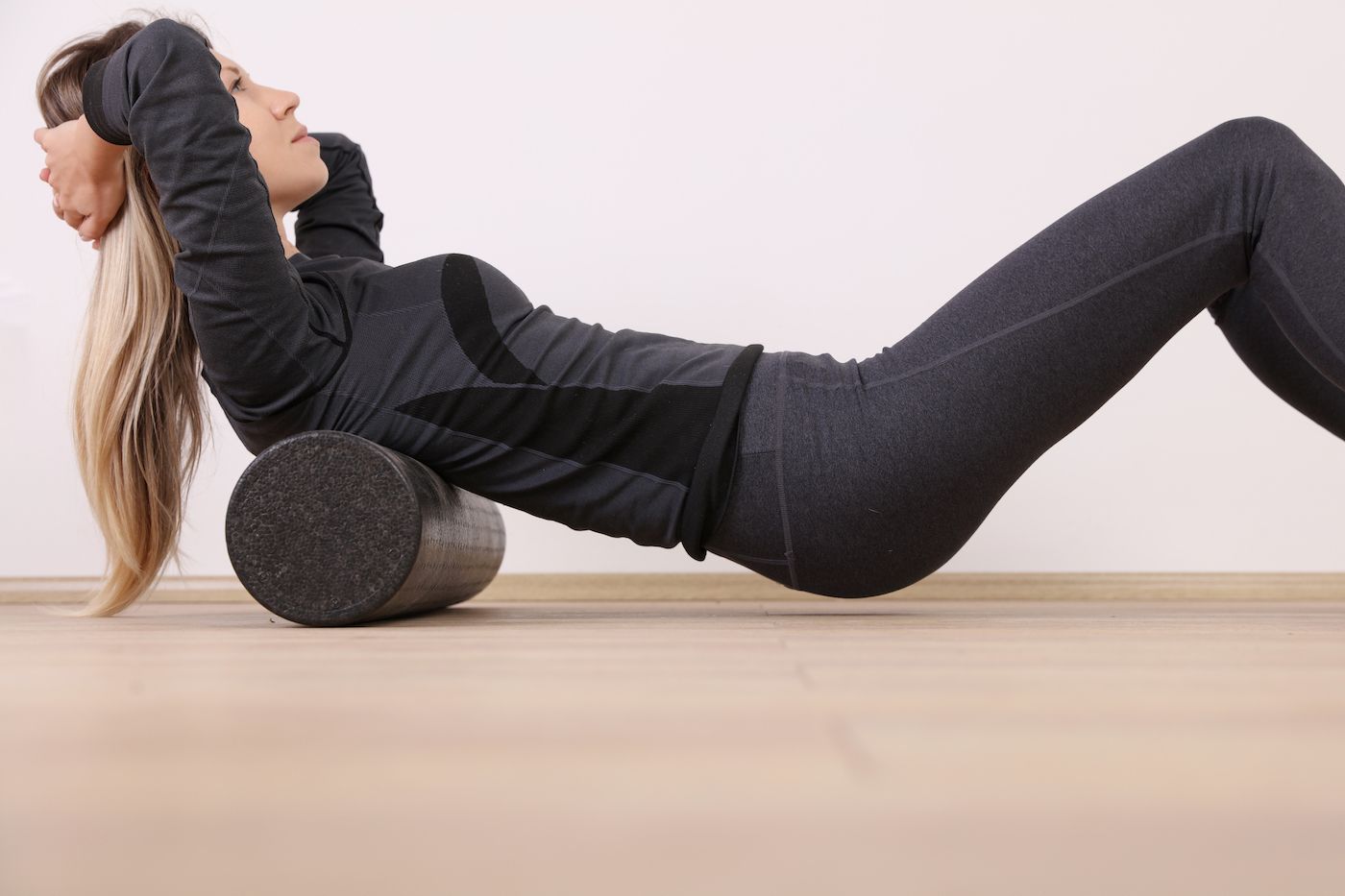
September 09, 2019 at 10:53PM by CWC
Every once in a while in yoga class, a magical thing happens: the teacher comes up behind you during savasana and gives you a neck massage. The five-second act of other care is worth the entire $30 drop-in free, in my opinion. But you don’t have to leave your house to give your neck tender loving care. Once you know about cross-fiber friction foam rolling, you can get that “Ooh, ah!” feeling in your very own living room.
At this year’s Wanderlust 108 festival in Brooklyn, Julie Wu—an instructor with RAD roller—taught me a valuable lesson in foam rolling. Even though most of us are trained to just move the device north and south to knead out tension, a little east and west action is good, too. That’s why Wu had the group at Wanderlust place a Rad Rod (a tiny, tube-like roller) just beneath the nape our necks and wiggle it right and left as well as up and down. It felt like a euphoric out-of-body experience, and I walked away from class feeling like a gazelle. That is, a taller, more agile version of myself.
A horizontal approach to foam rolling is called cross-fiber friction foam rolling. Rather than running the foam roller along the length of the muscle, you’re going against the grain of the muscle fiber. For example, if you’re trying to target your quads, roll the tool from side to side rather than from knee to hip. When I ask Maillard Howell, owner of CrossFit Prospect Heights and founder of the The Beta Way, why this simple switch-up in my normal foam-rolling regimen felt so miraculous, he says that what I’m really doing is “hunting for all the feels.”
“The human body is made up fascia—layers of muscle, layers of fiber,” he says. “If you’re just attacking it from one perspective, I don’t think you’re going to be reaping many benefits past a certain threshold.” To make sure you’re not hitting a plateau with your massage technique (on your neck and other body parts), Howell says you can tweak one of three foam rolling factors:
- Direction
- Pressure
- Time
All-too-often foam rollers, lacrosse balls, and other recovery devices get the reputation of being “chill and relaxing.” If you like to casually Theragun for five minutes right before crawling beneath your covers, that’s okay. Once a week though, Howell recommends taking a more serious, mindful approach to your recovery. He recommends 20 minutes of tailored-to-you foam rolling that requires some physical effort.
ADVERTISEMENT
ADVERTISEMENTKate Spade Autumn/Winter Sale |
“It’s meant to be uncomfortable, not painful. If you have a little grimace, perfect—you found the spot. Whatever that spicy spot is, let’s just hang out there for a while,” says Howell. When you experiment with the three factors above, you two will find yourself charting previously-unknown tension in your neck, lower back, hamstrings, or whatever body part is begging for your attention. And all because you dared move your foam roller an inch to the right or left.
FYI, you might want to foam roll before your workout. And try this technique when hip pain hits.
Author Kells McPhillips | Well and Good
Selected by CWC
ADVERTISEMENT
ADVERTISEMENTUp to 30% off Gift Sets |





